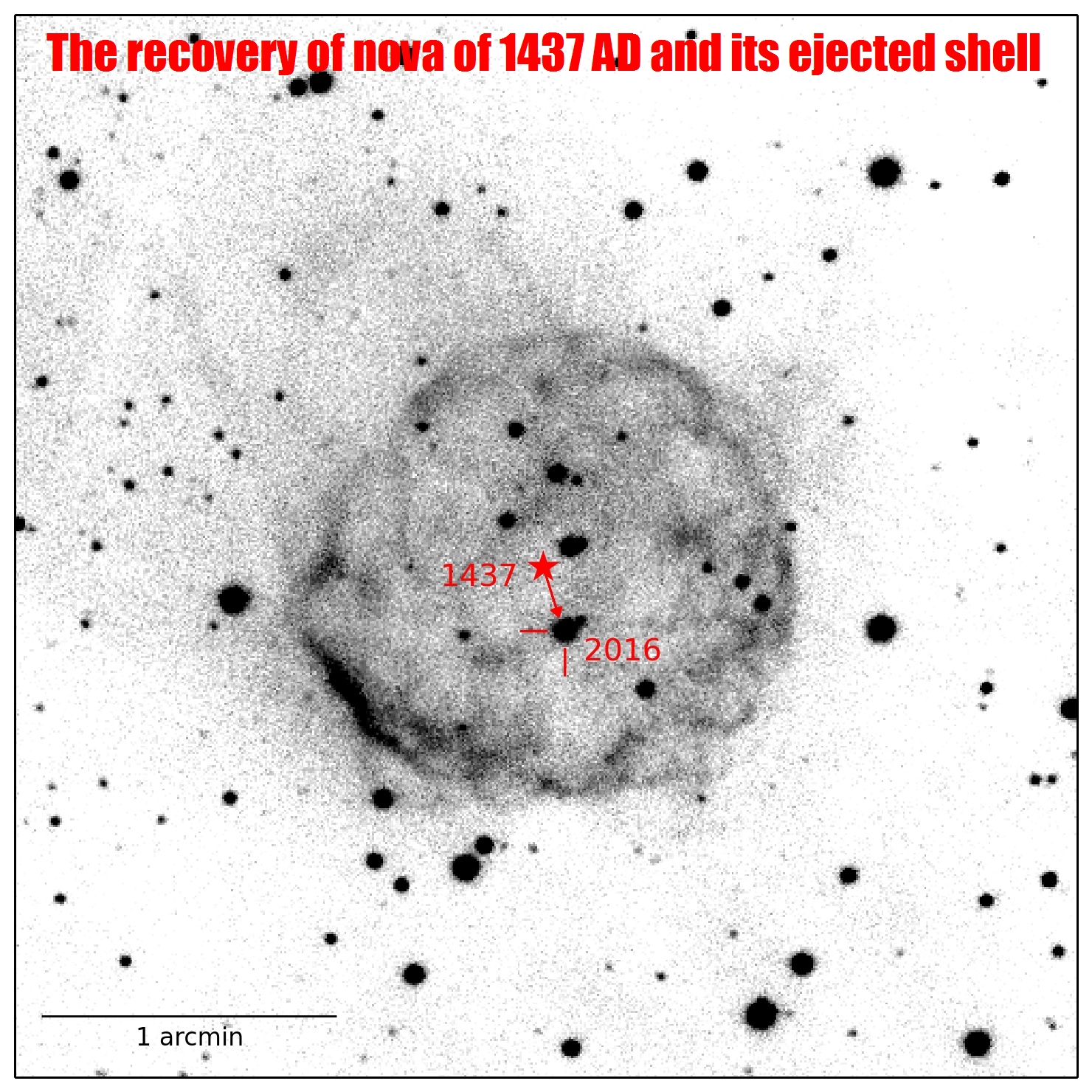Recovery of nova spotted by ancient Koreans illuminates many stages of star system’s life cycle
On a cold March night in Seoul almost 600 years ago, Korean astrologers spotted a bright new star in the tail of the constellation Scorpius. It was seen for just 14 days before fading from visibility. From these ancient records, modern astronomers determined that what the Royal Imperial Astrologers saw was a nova explosion, but they have been unable to find the binary star system that caused it - until now.
A new study published today in the journal Nature, by Michael Shara from American Museum of Natural History, Krystian Iłkiewicz and Joanna Mikołajewska from Copernicus Astronomical Center of Polish Academy of Sciences with 13 coauthors, pinpoints the location of the old nova, which now undergoes smaller-scale “dwarf nova” eruptions.
This is the first nova that has been recovered with certainty based on the Chinese, Korean, and Japanese records of almost 2,500 years.
The work, based on observations from the South African Large Telescope (SALT), and smaller telescopes at South African Astronomical Observatory (SAAO), and the observatory in Las Campanas, supports the idea that novae go through a very long-term life cycle after erupting, fading to obscurity for thousands of years and then building back up to become full-fledged novae once more.
A nova is a colossal hydrogen bomb produced in a binary system where a star like the sun is being cannibalized by a white dwarf - a dead star. It takes about 100,000 years for the white dwarf to build up a critical layer of hydrogen that it steals from the sun-like star, and when it does, it blows the envelope off, producing a burst of light that makes the star up to 300,000 times brighter than the sun for anywhere from a few days to a few months.
For many decades M. Shara and other scientists have tried to pinpoint the position of the star which was a source of the nova eruption in 1437. In the recent study the area of search for candidates was expanded thanks to a new interpretation of the ancient records. As a result, the nova remnant: the ejected nova shell with the cataclysmic binary near to its center was found (see figure). The finding was confirmed with another kind of historical record: a photographic plate from 1923 taken at the Harvard Observatory station in Peru. The position of the binary in 1923, compared to the current position, made it possible to measure the velocity with which the stars moves on the sky. Tracing back this motion to the 1437 placed the binary right in the center of the shell (see figure). The motion of the star is like a clock, which proven that this object is responsible for the outburst recorded by Korean astrologers.
Other photographic plates from the 1940s helped reveal that the system is now a dwarf nova, indicating that so-called “cataclysmic binaries” - novae, novae-like variables, and dwarf novae - are one and the same, not separate entities as has been previously suggested. After an eruption, a nova becomes “nova-like”, then a dwarf nova, and then, after a possible hibernation, comes back to being nova-like, and then a nova, and does it over and over again, up to 100,000 times over billions of years.
The challenge in understanding the evolution of these binary stars was that the lifecycle of a nova is hundreds of thousands of years. We simply have not been around long enough to see a single complete cycle. The breakthrough was being able to reconcile the 580-year-old Korean recording of this nova event to the dwarf nova and nova shell that we see in the sky today.
To get a better look at the present state of the binary system, J. Mikołajewska and K. Iłkiewicz obtained several SALT spectra of the binary and the shell. These data allowed to identify the white dwarf companion and to determine its temperature and distance, to constrain the binary components’ masses, as well as to estimate the temperature, density and mass of the shell.
Photometric monitoring of the system, carried with telescopes in SAAO and Las Campanas, revealed deep eclipses which allowed the team to very accurately derive the system’s orbital period. In addition, the SAAO photometry (obtained over 11 days by Lisa Crause) demonstrated that the white dwarf rotates with a period of 1859 sec, the same periodicity that is present in X-ray observations.
This research was partly founded by the National Science Centre within the Harmonia program (grant 2013/10/M/ST9/00086 to J. Mikołajewska).

The recovered nova of 1437 AD and its ejected shell. In this Há image - taken with the SWOPE 1-meter telescope in Las Campanas – north is up and east is to the left. The location of the cataclysmic variable in 2016 is indicated with red tick marks. Its proper motion (arrow) places the 1437 AD cataclysmic variable 7.4″ east and 16.0″ north of its current position, at the red star symbol.
The 1437 positions of the shell centre and of the cataclysmic variable agree to within 1.7″ , and their 1ó error ellipses overlap.
Links:
http://www.nature.com/nature/journal/v548/n7669/full/548526a.html?WT.feed_name=subjects_physics
